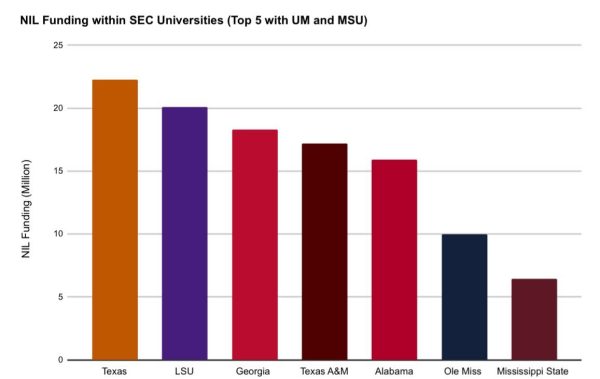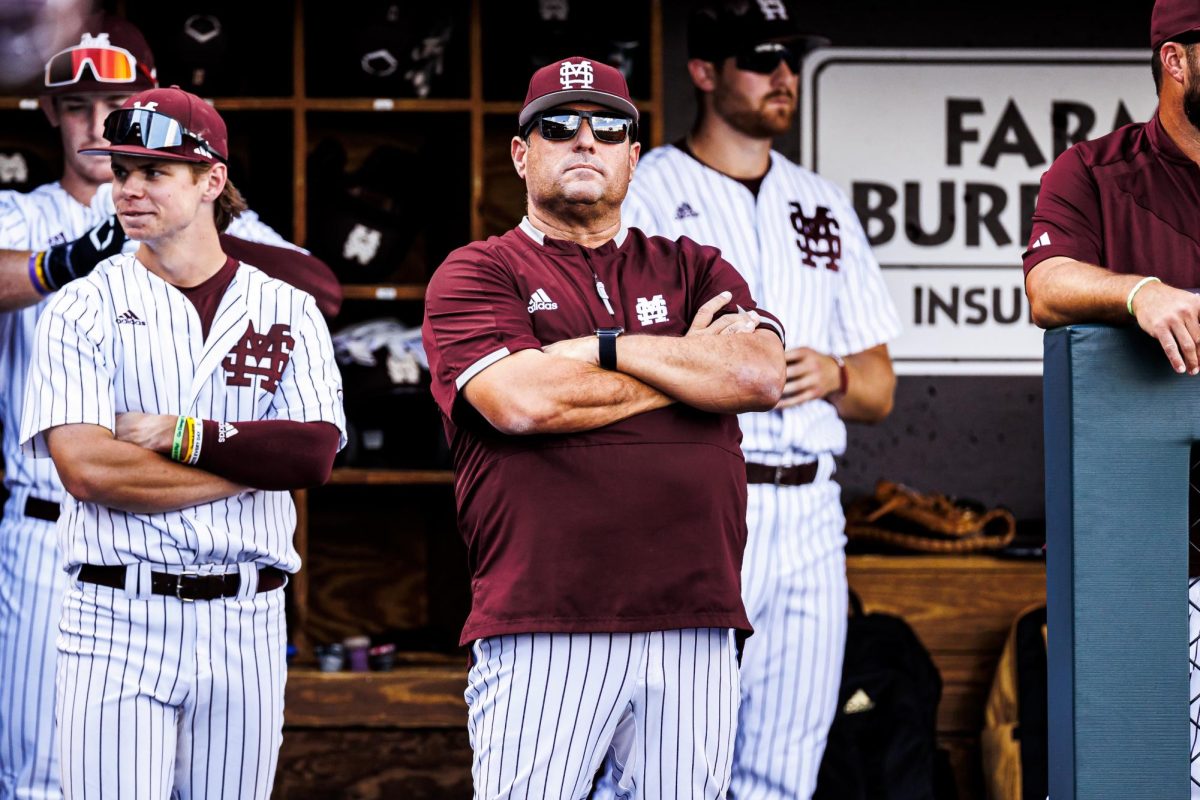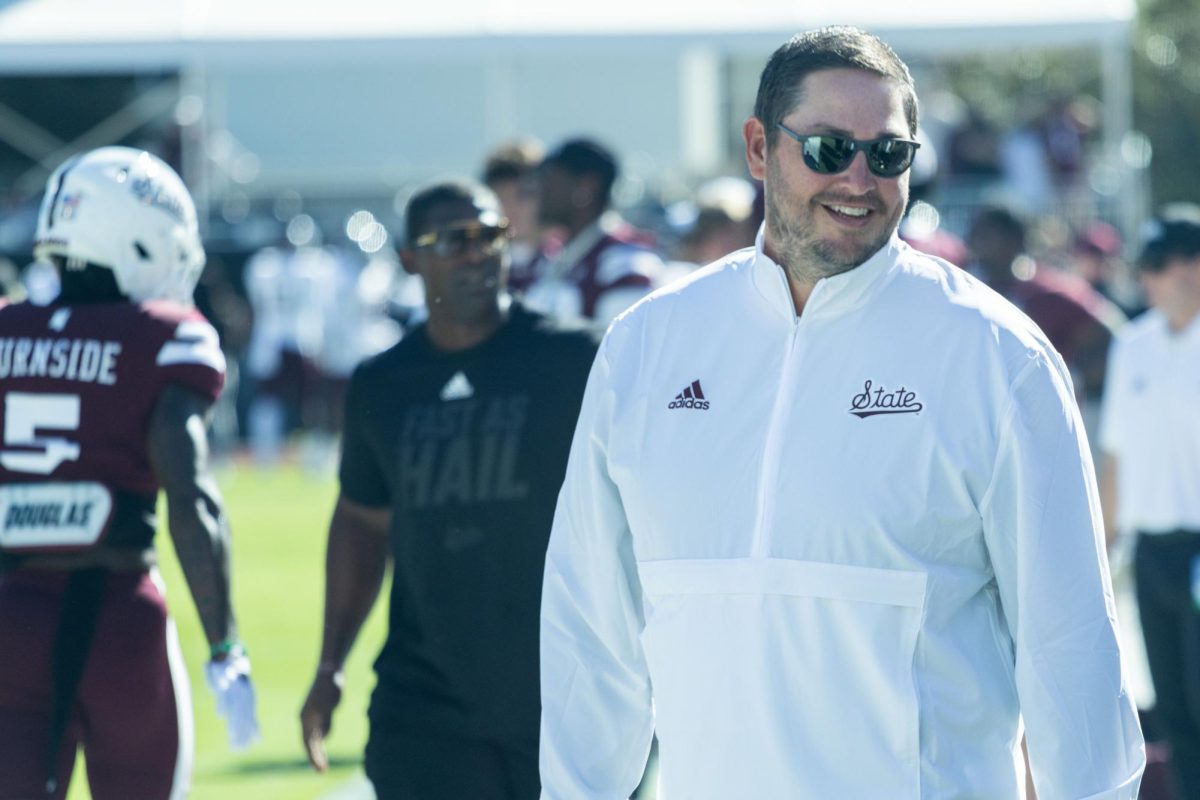The recent establishment of the State Excellence NIL fund, created by an $8 million gift in September 2024, has bolstered Mississippi State’s ability to attract and retain talent. However, it still falls short of the competitive levels embraced by several SEC rivals.
Mississippi State’s reserved stance on NIL is particularly apparent compared to that of its in-state rival, Ole Miss. While Ole Miss has leaned into NIL as a vital recruitment tool, Mississippi State’s fan base and alumni have been slower to support The Bulldog Initiative. Ole Miss, by contrast, has raised 54% more than Mississippi State during the offseason.
Some Bulldogs supporters view NIL as unnecessary or even a distraction from traditional college athletics. This hesitancy has led to lukewarm financial backing, which widens the competitive gap and puts Mississippi State at a disadvantage in the SEC’s high-stakes NIL race, according to NIL-NCAA.com.
As other programs leverage robust NIL budgets to attract elite talent, Mississippi State’s conservative approach limits its full potential, impacting its ability to compete for top-tier recruits on equal footing.
For Mississippi State, NIL is no longer optional but essential for remaining competitive within the SEC, where programs increasingly use every resource available to secure elite recruits. This gap in NIL support risks leaving Mississippi State behind as the Bulldogs face a conference where rival schools maximize NIL opportunities to recruit and retain NFL-caliber talent.
Without a shift in community buy-in and stronger financial support for The Bulldog Initiative, Mississippi State may find it increasingly challenging to keep pace in a landscape where NIL is fundamental to the success of modern athletic programs.
The landmark House v. NCAA case, initiated in 2020 by Arizona State swimmer Grant House and joined by TCU basketball player Sedona Prince, further shapes the NIL landscape and offers potential relief for schools like Mississippi State. According to Fox Sports, this lawsuit challenged the NCAA’s restrictions on athlete compensation.
Earlier this year, in May 2024, the case resulted in a significant settlement in which the NCAA and the Power Five conferences agreed to pay $2.8 billion in damages to former athletes and establish a revenue-sharing model. This settlement allows schools to allocate up to 22% of their annual revenue directly to athletes.
Judge Claudia Wilken, senior judge of the Northern District of California, granted preliminary approval for the settlement in October 2024, with implementation targeted for the 2025-26 academic year, CBS Sports reported.
For schools like Mississippi State, the revenue-sharing model represents an unprecedented opportunity to offer athletes more stable and substantial financial support.
Under this new structure, Mississippi State’s athletic department could be allocated around $21 million annually to support athlete compensation, creating a new financial pathway to recruit and retain high-impact athletes. This revenue-sharing approach is designed to supplement NIL deals, enabling schools to provide a consistent compensation model that does not rely solely on third-party agreements.
For a program like Mississippi State’s, which has traditionally taken a conservative approach to NIL, this model could help bridge the gap with SEC programs that have more aggressive NIL budgets, giving the Bulldogs a new tool to attract top-tier talent.
The House v. NCAA settlement includes additional measures to promote fairness and transparency in athlete compensation. These provisions include expanded NIL opportunities, eliminating scholarship limits in favor of roster limits and establishing a clearinghouse to monitor NIL payments exceeding $600.
This clearinghouse, introduced by the NCAA, seeks to prevent misuse and ensure that NIL compensation aligns with the intended spirit of fair play in college athletics, according to NCAA.org. By creating a standardized system to track high-value NIL payments, the NCAA aims to safeguard transparency across programs, reducing the risk of unregulated deals that could skew recruitment.
For Mississippi State, this revenue-sharing model not only has the potential to strengthen its recruitment efforts but may also reshape how fans and alumni view financial contributions. Many Mississippi State supporters currently see NIL as a luxury rather than a necessity, but this model could change that perception.
As the Bulldogs transition into a model where fan and alumni contributions directly impact recruiting power, the shift could redefine NIL as a necessity, helping Mississippi State close the gap with its SEC rivals.
However, the House v. NCAA decision introduces challenges as well. One concern is that by directing millions in revenue toward football and men’s basketball, schools like Mississippi State could face reduced resources for non-revenue sports.
Programs in women’s soccer, track or other non-revenue-generating sports may experience budget cuts or, in some cases, risk program downsizing. This shift could force Mississippi State to make tough decisions about resource allocation and balancing athlete compensation against essential costs like facilities, coaching, and program development. As schools consider this new reality, they may move closer to a professional model where payroll management is a central aspect of athletic department operations.
The potential move toward a more professionalized model also implies a shift in the NCAA’s role. With the introduction of the clearinghouse to oversee NIL payments and the expanded regulations on roster limits, the NCAA is positioning itself as a regulatory authority in college athletics focused on ensuring transparency and compliance.
By tracking high-value NIL transactions and managing the new revenue-sharing structure, the NCAA aims to provide a more structured approach to athlete compensation, helping schools navigate the complex balance between fair player support and program sustainability.
As Mississippi State looks to the future, the Bulldogs have an opportunity to rethink their approach to athlete recruitment and support. Embracing the revenue-sharing model from House v. NCAA could allow Mississippi State to attract recruits with offers of direct compensation, mitigating the competitive disadvantage created by a cautious NIL approach. Additionally, rallying more fan and alumni support could enable The Bulldog Initiative to grow and help the school compete more effectively within the SEC’s dynamic NIL landscape.
With careful adaptation to these changes and a renewed emphasis on strategic funding, Mississippi State may finally turn its reputation for player development into competitive success on game days, thriving in a college athletics environment increasingly defined by fair compensation and investment in athletes.










OB • Nov 6, 2024 at 5:23 pm
The member colleges began to accept money from TV revenue when televised games became widespread in the late 1970’s and 1980s but the colleges did not want to share the revenue with the players until they were required to. So in other words, the colleges themselves are the ones that professionalized college athletics by accepting TV revenue share from the SEC. Why not share revenue with the players? The colleges expect players to play for free while they make millions of dollars off of them? I do believe that there needs to be a salary cap in each conference to be fair, just like in the NFL and NBA. In addition, contracts for one year or several years would help college teams from losing players. The transfer portal helps schools like Mississippi State to make sure that no position is depleted due to graduation or players leaving. So it is like a professional model of sports for college teams, which I think is a good idea because it helps the players financially, most of whom will not make the NFL or NBA. If this model works for the pros, why would it not work for college teams? If businesses are required to pay a royalty to sell merchandise with the college teams logo or player’s name, then part of that money should go to the players, also and not just the college.